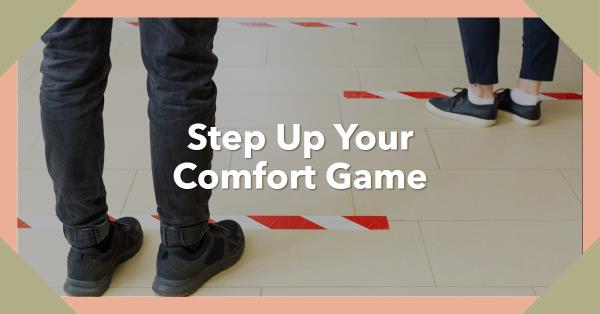How to Choose the Best Shoe Insoles

Selecting the right shoe insoles is crucial for ensuring comfort, support, and overall foot health. Whether you're an athlete seeking improved performance or someone dealing with foot pain, finding the best shoe insoles can make a significant difference in your daily life. In this comprehensive guide, we will delve into the various factors to consider when choosing shoe insoles, the different types available, and how they
late to your specific needs. Additionally, we'll touch upon the concept of "Reps shoes" and its relevance to the insole selection process.
I. Understanding the Importance of Shoe Insoles Shoe insoles, also known as footbeds or orthotics, are designed to provide additional support, cushioning, and stability to your feet while wearing your shoes. They serve several purposes, including:
a. Shock Absorption: Insoles absorb impact forces, reducing the stress on your joints. b. Arch Support: They can provide arch support, addressing issues like flat feet or high arches. c. Comfort: Insoles enhance overall comfort, reducing fatigue during long walks or activities.
II. Types of Shoe Insoles There are various types of shoe insoles, each catering to specific needs. It's important to understand these types before making a choice:
a. Cushioning Insoles: Designed for comfort and shock absorption. b. Supportive Insoles: Provide arch support and stability. c. Custom Orthotics: Tailored to individual foot shapes and needs. d. Sports-specific Insoles: Geared towards athletic performance enhancement. e. Heel Cups and Inserts: Address issues like plantar fasciitis and heel pain.
III. Factors to Consider When Choosing Shoe Insoles Selecting the best insoles depends on several factors:
a. Foot Type: Determine your foot arch type (flat, neutral, or high) to select the appropriate insole. b. Activity Level: Consider your regular activities (running, walking, standing) to choose insoles designed for your specific needs. c. Shoe Type: Ensure the insoles fit comfortably in your shoes without causing crowding. d. Medical Conditions: Consult with a healthcare professional if you have foot conditions like diabetes or arthritis.
IV. Rep Shoes and Their Relevance "Rep shoes" are replica or imitation shoes designed to resemble popular brand-name footwear. These knockoff shoes are often more affordable but may compromise on quality and comfort. When choosing insoles for "Rep shoes," it's essential to focus on comfort and support. While the footwear itself may not provide the same level of support as the genuine article, carefully selected insoles can help mitigate discomfort and enhance overall wearability. It's crucial to select insoles that fit well within these shoes, as the fit can be slightly different from the authentic versions.
V. Selecting the Right Material The material of the insole plays a vital role in its effectiveness. Common materials include foam, gel, cork, and leather. Each has its own advantages:
a. Foam Insoles: Lightweight and cushioned, ideal for shock absorption and comfort. b. Gel Insoles: Provide excellent shock absorption and comfort, especially for high-impact activities. c. Cork Insoles: Offer natural support and moisture-wicking properties. d. Leather Insoles: Durable and contour well to your feet over time.
VI. Sizing and Trimming Insoles come in various sizes, but they are often designed to be trimmed to fit your shoes perfectly. It's essential to choose the right size or purchase insoles that are easily trimmable. A proper fit ensures that your insoles don't cause crowding or discomfort in your shoes.
VII. Durability and Replacement The longevity of your insoles depends on the material and how often you wear them. Consider how frequently you'll use the insoles and opt for durable options if you require long-lasting support. Insoles, like shoes, will need replacement over time, so keep track of wear and tear.
VIII. Consulting a Podiatrist If you have chronic foot problems or complex issues, it's advisable to consult a podiatrist. They can provide guidance on the best insoles for your specific condition and may even recommend custom orthotics.
IX. Maintenance and Care To extend the lifespan of your insoles, practice proper maintenance. Air them out regularly to prevent odor, and clean them as per the manufacturer's instructions. Insoles can be replaced and washed separately from your shoes.
X. Choosing Reputable Brands When purchasing insoles, it's wise to opt for reputable brands with a history of producing quality foot support products. These brands often offer a range of insoles tailored to different needs and foot types.
XI. The Importance of Trying Insoles Finally, don't forget to try the insoles before committing to them. Walk or run in your shoes with the insoles to ensure they provide the desired level of comfort and support. Some insoles come with money-back guarantees if you're not satisfied.
Conlcusion:
In conclusion, selecting the best shoe insoles involves a thorough evaluation of your specific requirements, foot type, and the activities you engage in. It's a decision that can significantly impact your overall comfort, foot health, and, ultimately, your quality of life. Whether you're dealing with everyday footwear or "Rep shoes," taking the time to choose the right insoles is an investment in your overall well-being.